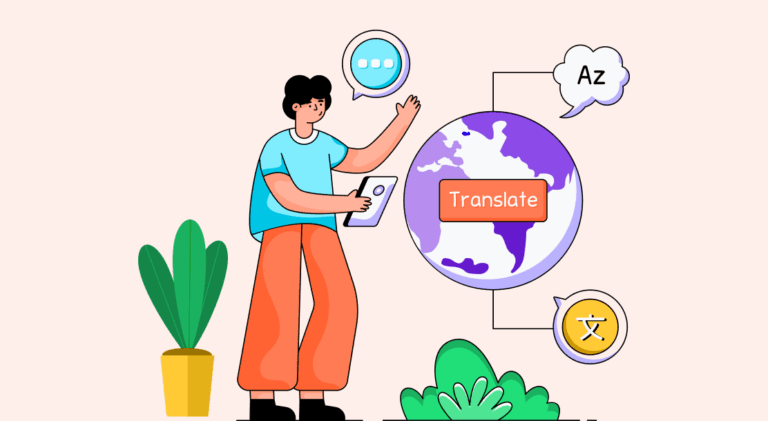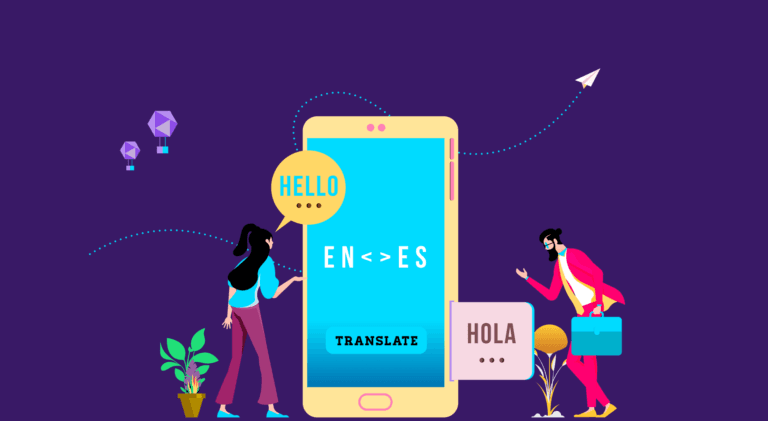Increase Website Traffic With 13 Content Translation Tips

An English-only website is no longer sufficient for a global audience. While English is popular, it is not even the most spoken language in the world. Only 25% of internet users speak English, although more than half of all websites worldwide are written in the language.
There is space for improvement in this area, as roughly three-quarters of online users prefer to go through a website written in their native tongue. An essential strategy for drawing visitors from the non-English speaking majority of the world is to optimize a website for many languages.
Many website owners are turning to content translation to promote an accessible online experience that embraces a worldwide audience.
Let us look at how you can take complete advantage of website content translation to increase web traffic with these pointers:
1. Translate in multiple languages
While English, Mandarin Chinese, and Spanish are the most spoken languages in the world, other languages such as Hindi, Bengali, Portuguese, Russian, and others are not far behind. To increase website traffic, don’t just stick to one additional language. Translate your website content in as many languages as possible without compromising quality. To ensure good quality, the website owner can think of translation as a long-term goal and focus on one area at a time.
2. Find locations that offer traffic to the website and start with those languages
One can find locations that offer the most traffic to any particular website using tools like Google Analytics. Suppose a website owner is just starting with translating website content; he has a higher chance of seeing results if he begins with languages of locations where their website is already popular.
3. Optimize website content
While a simple translation can get the job done, it can miss many cultural nuances specific to that language. It would create dry and uninteresting website content. An excellent way to avoid this would include culture-specific examples, idioms, currency, or other small details. This optimization of translated website content is also known as content localization. It focuses on ensuring that the translation involves the best content that is relevant and relatable to natives of places other than where the content was written for.

4. Do not machine translate articles
Machine translation is an easy way out for many website owners looking to translate articles on their sites for increased website traffic. While using machine-translated website content is much cheaper, it is also of poor quality. Most language speakers can tell when the content is copy-pasted from a translation tool. It could harm the reliability of a website, so avoid machine translations.

5. Pick a reliable translation project manager or team
Chances are that the website owners are unfamiliar with most languages in which they want to translate their website content. To ensure that the content is up to standards in such cases, website owners should opt for trustworthy translation services or approach translation project managers who are known to do well. A translation project manager assembles a translation team and overlooks the entire process to give their clients good quality translations.
6. Proofread well
Proofreading is an essential part of the process to ensure the legibility of the translated website content. Unless and until the website content is readable and understandable, it is unlikely to drive traffic to the website. For best results, one can go for freelance proofreaders or ask native speakers to read the translated website content.
7. SEO optimization
Just as it is vital to perform search engine optimization for website content in English, it is essential to ensure the SEO quality of translated website content. Additionally, Google and other search engines rank websites in multiple languages higher and attract increased website traffic. SEO for various languages is known as multilingual SEO and includes separate keyword searches for the relevant languages, translation of the website slugs, and more.

8. Business development and expansion opportunities
Once a business translates its website, trying to understand customers becomes easier. It also attracts more business opportunities. The business could consider a separate sales or customer care wing for the specific location that has led to the maximum increase in website traffic.
9. Collect customer feedback
Simply translating website content might not be everything when it comes to website translations. It can be helpful to collect feedback regarding the website content or other factors, as native speakers are more likely to catch mistakes. It will also improve impressions on other users as they realize that their suggestions matter to the website.
10. Take care to translate additional pages
While many websites have gotten on board the translation wagon, they tend to stick to the main pages. Since translation can be expensive, additional information pages such as FAQs or support are often not prioritized when translating website content. Therefore, focusing on these can help make a business website stand out and increase website traffic further.
11. Translate social media and other content
Translating website content can be a good idea but is not the only way to increase website traffic. Translate articles and other aspects of marketing to make them relevant to the selected areas of the world. Translating social media posts and creating different accounts to share promotional campaigns in other languages can be done. Although such a step would require some extra workforce, it can be helpful in further increasing website traffic.
12. Focus on one area at a time
A business can begin by focusing on a specific region, such as, say, Latin America. They could optimize the website content in languages used in the particular region. They could also create separate social media accounts to promote their products or create marketing campaigns that fit the cultural niche of the site. Focusing on only one country or area at a time can help streamline the translation process and all the challenges that come alongside it.
13. Do not forget monetized content
While the translation of website content is the priority, it goes without saying that monetization of the website should not be compromised for the same. Any relevant affiliate links and ads can be continued on the website to ensure that the increase in website traffic brings the business income.
Conclusion
Translating websites is hard work and a big commitment, but it is known to increase website traffic by leaps and bounds when done correctly. It can be helpful to have multiple languages for the website while focusing on only one region at a time and to employ trustworthy translators or project managers for the job. Opt for the best content localization and adhere to SEO rules to further enhance the website. Give importance to proofreading the content and collecting feedback from native speakers.
Translating website content can lead to better business expansion and development opportunities; it would be a good idea to follow up on these and create separate branches when required. Additional content such as FAQ pages, support, and social media can also be translated to invite more website traffic and international clientele. Take care to include monetized content to harness the increased website traffic.
FAQs
Website translation can offer many perks such as:
1. Wider markets and potential clients.
2. Globalization of the business leads to increased trust.
3. Better SEO rankings and visibility of websites.
More website traffic increases the chances of more users becoming the business’s clients.
Content translation is the process that involves making specific content relevant to readers or users in a different part of the world than the one it was first written for. It includes adapting the existing content to a different geographical or cultural context.
The translation rate shows the number of pages a website gets its traffic and can help in analytics.
Depending upon the website content and the translator’s speed, it can take anywhere from 1 hour to 1 day. After sharing your content requirements, it would be best to ask the translators for an accurate estimate.
It can take up to a week or two to properly gauge the change in website traffic after translating or performing additional SEO actions.
Multilingual SEO ensures that a website fits SEO criteria across languages for improved visibility and higher web traffic. It can include steps like translating URLs, using keywords, performing a keyword search for other languages, etc.
Latest Blogs
Explore how Google’s 2025 AI search updates triggered ranking chaos. Learn actionable strategies to adapt your SEO for AI Overviews, zero-click searches, and SERP volatility. Stay ahead now.
Learn how to rank on AI search engines like ChatGPT, Perplexity, and Gemini by optimizing your content for authority, structure, and relevance. Stay ahead in AI-driven search with this strategic guide.
Explore the best healthcare SEO services for your medical practice. Improve online visibility and effectively reach more patients in need of your services.
Get your hands on the latest news!
Similar Posts

Translation
5 mins read
All You Need to Know About Language Translation and Terminology Management

Translation
5 mins read
6 Reasons to Translate Content into German

Translation
5 mins read